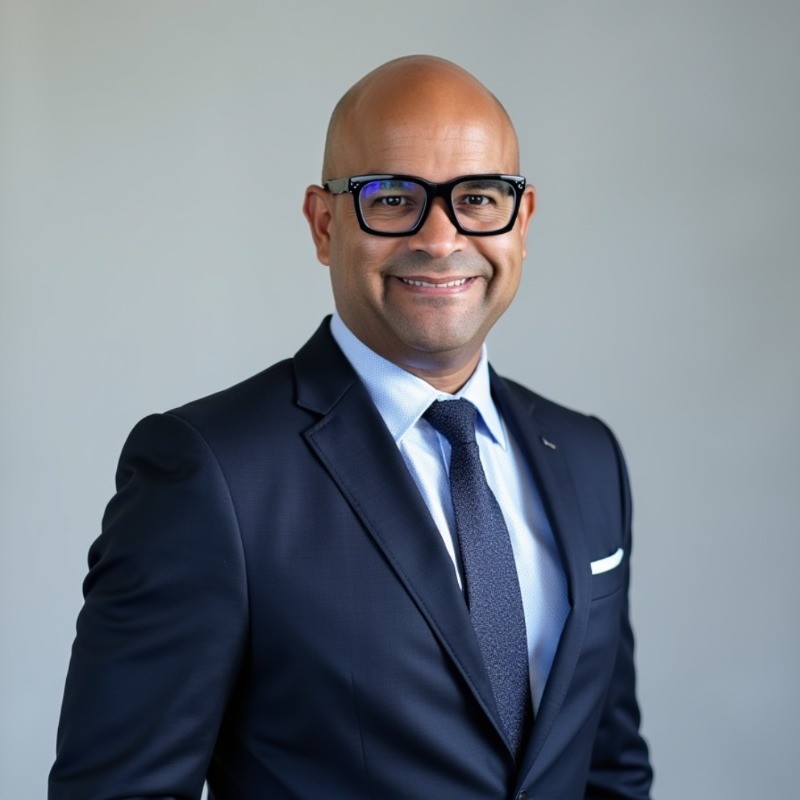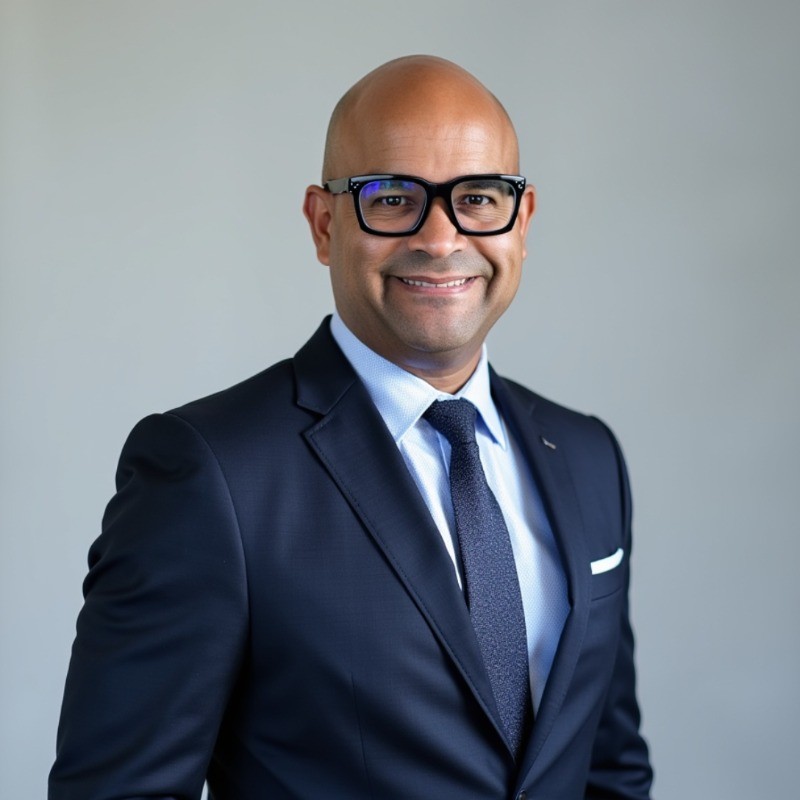
AI’s integration into HR is transforming work processes, requiring organizations to adapt or risk obsolescence.
Angel Cruzado, CEO of Respiris, discusses AI’s impact on how tasks are performed, not what tasks are done.
Despite AI’s benefits, anxiety persists due to potential job displacement and the fast pace of technological advancement.
Cruzado advocates for mentorship and ‘guard-railed’ environments to facilitate adoption and experimentation.

AI’s swift advance into HR is forcing a reckoning: new strategies are essential, but anxieties are mounting, and the very way work gets done is changing. Savvy leaders are urging employees and organizations alike to adapt, or risk being left behind.
Angel Cruzado, Founder and CEO of HR technology firm Respiris, joined us to discuss how he guides his company along the AI tightrope. “When I think of human capital in HR, it’s not what we do that is shifting, it’s how we do it,” he says. Recent AI adoption in HR has quickened, fundamentally altering how HR work is performed on an individual level. But increased productivity doesn’t necessarily indicate an uptick in how employees feel about their changing roles.
Anxiety’s edge: A clear AI strategy doesn’t erase unease. Cruzado admits to “a lot of anxiety around AI and the workplace”. “I see a lot of employees being displaced because of it, but I’m also seeing how quickly the technology is advancing.” Respiris meets this head-on by weaving AI into its core operations—using employee playbooks and AI companion coaches—all rooted in its values of AI, community, and deep empathy to uplift individuals in transition.
The adoption gap: Many large companies, Cruzado worries, are too slow to adopt AI, often waiting for IT to lead rather than empowering widespread employee experimentation. His concern mirrors findings that while 92% of large enterprises plan to boost AI spending, C-suite executives feel their organizations are moving too slowly. Simultaneously, security and AI risk potential means businesses must first build ‘guard-railed’ environments for employees to test AI tools.
Inside AI praxis: Cruzado combats his own AI anxiety by actively learning from experts and using tools like ChatGPT for everything from synthesizing data to preparing for board meetings. He points to the efficiency of voice-activated AI and the work of normalizing AI as a partner, particularly as 70% of employees are projected to use AI tools daily by 2025. “I find these moments where I’m like looking at all this content. But having AI also enable me to make sure that I’m like being really efficient on focusing my attention toward the things I should be considering most.”

Bridging experience: Getting seasoned professionals to embrace any new tool remains a challenge. Cruzado suggests mentorship can help, comparing AI adoption to learning to ride a bike—awkward at first, but ultimately necessary. Such adaptation is key as companies focus more on upskilling their teams. He also notes that regulated fields like finance and healthcare, confirmed by research to be warier due to compliance, risk falling behind nimbler firms or innovation in other regions.
But looking ahead, Cruzado believes “every single human in a company will have two to three agents working ‘next to them’.” He points to the power of current AI with tools like Sora for images and Gamma for presentations, noting these examples are merely “scratching the surface.” His own company, Respiris, uses AI to accomplish tasks that once demanded huge resources.
The growth imperative: Companies that don’t embrace AI, Cruzado argues, are effectively overpaying for labor; a growth mindset and willingness to learn on the fly is indispensable. “It’s a way of working, it’s a way of thinking, it’s a way of framing things. Leaders should not be afraid to fail, go through the discovery, and know that we don’t have all the answers,” he concludes.
AI’s integration into HR is transforming work processes, requiring organizations to adapt or risk obsolescence.
Angel Cruzado, CEO of Respiris, discusses AI’s impact on how tasks are performed, not what tasks are done.
Despite AI’s benefits, anxiety persists due to potential job displacement and the fast pace of technological advancement.
Cruzado advocates for mentorship and ‘guard-railed’ environments to facilitate adoption and experimentation.

Respiris

AI’s swift advance into HR is forcing a reckoning: new strategies are essential, but anxieties are mounting, and the very way work gets done is changing. Savvy leaders are urging employees and organizations alike to adapt, or risk being left behind.
Angel Cruzado, Founder and CEO of HR technology firm Respiris, joined us to discuss how he guides his company along the AI tightrope. “When I think of human capital in HR, it’s not what we do that is shifting, it’s how we do it,” he says. Recent AI adoption in HR has quickened, fundamentally altering how HR work is performed on an individual level. But increased productivity doesn’t necessarily indicate an uptick in how employees feel about their changing roles.
Anxiety’s edge: A clear AI strategy doesn’t erase unease. Cruzado admits to “a lot of anxiety around AI and the workplace”. “I see a lot of employees being displaced because of it, but I’m also seeing how quickly the technology is advancing.” Respiris meets this head-on by weaving AI into its core operations—using employee playbooks and AI companion coaches—all rooted in its values of AI, community, and deep empathy to uplift individuals in transition.
The adoption gap: Many large companies, Cruzado worries, are too slow to adopt AI, often waiting for IT to lead rather than empowering widespread employee experimentation. His concern mirrors findings that while 92% of large enterprises plan to boost AI spending, C-suite executives feel their organizations are moving too slowly. Simultaneously, security and AI risk potential means businesses must first build ‘guard-railed’ environments for employees to test AI tools.
Inside AI praxis: Cruzado combats his own AI anxiety by actively learning from experts and using tools like ChatGPT for everything from synthesizing data to preparing for board meetings. He points to the efficiency of voice-activated AI and the work of normalizing AI as a partner, particularly as 70% of employees are projected to use AI tools daily by 2025. “I find these moments where I’m like looking at all this content. But having AI also enable me to make sure that I’m like being really efficient on focusing my attention toward the things I should be considering most.”

Respiris

Bridging experience: Getting seasoned professionals to embrace any new tool remains a challenge. Cruzado suggests mentorship can help, comparing AI adoption to learning to ride a bike—awkward at first, but ultimately necessary. Such adaptation is key as companies focus more on upskilling their teams. He also notes that regulated fields like finance and healthcare, confirmed by research to be warier due to compliance, risk falling behind nimbler firms or innovation in other regions.
But looking ahead, Cruzado believes “every single human in a company will have two to three agents working ‘next to them’.” He points to the power of current AI with tools like Sora for images and Gamma for presentations, noting these examples are merely “scratching the surface.” His own company, Respiris, uses AI to accomplish tasks that once demanded huge resources.
The growth imperative: Companies that don’t embrace AI, Cruzado argues, are effectively overpaying for labor; a growth mindset and willingness to learn on the fly is indispensable. “It’s a way of working, it’s a way of thinking, it’s a way of framing things. Leaders should not be afraid to fail, go through the discovery, and know that we don’t have all the answers,” he concludes.
© 2025 Bamboo HR LLC. All Rights Reserved. BambooHR® is a registered trademark of Bamboo HR LLC